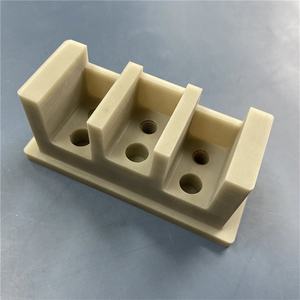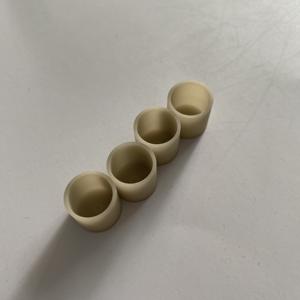Professional industry ceramic supplier, silicon nitride, silicon carbide, aluminum nitride and any other kinds of ceramics.
PRODUCT PARAMETERS
Description
Overview of Composite Boron Nitride+Aluminum Nitride Bn/Aln Ceramics
Composite Boron Nitride+Aluminum Nitride Bn/Aln Ceramics is an advanced technical ceramic renowned for its exceptional thermal conductivity and reliable electrical insulation. It is a key material in high-power electronics, LED lighting, and semiconductor processing, effectively managing heat in demanding applications where performance and reliability are critical.
Features of Composite Boron Nitride+Aluminum Nitride Bn/Aln Ceramics
- High Thermal Conductivity: Offers excellent heat dissipation, comparable to beryllia (BeO).
- Electrical Insulation: Maintains high electrical resistivity even at elevated temperatures.
- Low Thermal Expansion: Matches the coefficient of thermal expansion of silicon, ideal for semiconductor substrates.
- Excellent Mechanical Strength: Possesses good mechanical properties for structural integrity.
- High-Temperature Stability: Performs reliably in harsh environments and at high temperatures.
- Non-Toxic: A safe alternative to beryllium oxide (BeO) ceramics.
Specification of Composite Boron Nitride+Aluminum Nitride Bn/Aln Ceramics
Composite boron nitride plus aluminum nitride ceramics, known as BN/AlN ceramics, combine materials. They offer unique properties hard to find elsewhere. BN brings excellent thermal shock resistance and lubricity. AlN contributes high thermal conductivity and good strength. Together they form a versatile advanced ceramic.
These ceramics handle extreme heat well. They won’t crack easily when temperatures change fast. Their thermal conductivity is good, typically between 40 and 180 W/m·K. This depends heavily on the exact mix and how it’s made. They resist oxidation effectively up to roughly 1000°C in air. Higher temperatures need protective atmospheres.
Electrically, BN/AlN ceramics are strong insulators. Their volume resistivity is very high. This makes them suitable for electrical applications needing insulation. Mechanically, they are strong but brittle like most ceramics. Their flexural strength usually falls between 100 and 300 MPa. Their hardness is high, measured on the Vickers scale. Density is relatively low, generally between 2.5 and 3.2 g/cm³.
Manufacturing BN/AlN ceramics involves common ceramic methods. Powder mixing is the first step. Shaping follows, often using pressing or casting. Then comes high-temperature sintering, usually above 1800°C. Hot pressing or hot isostatic pressing (HIP) is common. This achieves high density. The final microstructure and properties depend on the BN/AlN ratio, particle size, sintering conditions, and additives.
These ceramics serve demanding applications. They are used in semiconductor processing equipment. Examples include wafer chucks, heaters, and plasma focus rings. Their thermal stability and electrical insulation are critical here. They work well in metallurgy for crucibles and liners. Aerospace uses them for radomes and thermal management parts. The electronics industry uses them for heat sinks and insulators. Their machinability, thanks to BN, is a big advantage. Complex shapes are possible before final sintering.
Applications of Composite Boron Nitride+Aluminum Nitride Bn/Aln Ceramics
BN/AlN ceramics combine useful properties from both materials. They handle extreme heat well. They resist thermal shock too. These ceramics insulate electrically. They don’t react easily with other materials. This makes them valuable for tough jobs.
Semiconductor manufacturing uses BN/AlN parts heavily. They are common in wafer boats and process tubes. These parts hold silicon wafers during high-temperature steps. The ceramics survive intense heat cycles without cracking. They keep the wafers clean because they don’t contaminate them. They also don’t conduct electricity, which is essential.
Metal processing benefits from BN/AlN crucibles and liners. They melt reactive metals like aluminum or gallium. The ceramics withstand the molten metal’s heat. They don’t react with the metal chemically. This keeps the metal pure. Traditional ceramics often fail here. BN/AlN lasts much longer.
Aerospace and defense need materials for harsh conditions. BN/AlN works well for radomes and antenna windows. These parts protect sensitive electronics on missiles or aircraft. The material lets radar signals pass through easily. It handles high speeds and the resulting heat. It also resists erosion from rain or sand. Its strength and thermal shock resistance are key.
Heat management uses BN/AlN substrates and heat spreaders. Electronics generate lots of heat. BN/AlN pulls that heat away efficiently. It doesn’t conduct electricity, so it’s safe near circuits. It works better than metals or other ceramics in some high-power devices. This prevents overheating and failure.
Company Profile
Tanki New Materials Co.Ltd. focus on the research and development, production and sales of ceramic products, serving the electronics, ceramics, chemical and other industries. Since its establishment in 2015, the company has been committed to providing customers with the best products and services, and has become a leader in the industry through continuous technological innovation and strict quality management.
Our products includes but not limited to Aerogel, Aluminum Nitride, Aluminum Oxide, Boron Carbide, Boron Nitride, Ceramic Crucible, Ceramic Fiber, Quartz Product, Refractory Material, Silicon Carbide, Silicon Nitride, ect. please feel free to contact us.

Payment Methods
T/T, Western Union, Paypal, Credit Card etc.
Shipment Methods
By air, by sea, by express, as customers request.
5 FAQs of Composite Boron Nitride+Aluminum Nitride Bn/Aln Ceramics
What are BN/AlN ceramics?
BN/AlN ceramics combine boron nitride and aluminum nitride. This mix creates a special ceramic material. It offers unique properties not found in each material alone. Think of it as getting the best features from both.
What are the main benefits of BN/AlN ceramics?
These ceramics handle heat extremely well. They move heat efficiently, making them great for thermal management. They also resist sudden temperature changes without cracking. Electrical insulation is another key plus. They don’t conduct electricity, which is vital in electronics. They also resist chemical attack and wear over time.
Where are BN/AlN ceramics typically used?
You find them where heat is a big problem. Common uses are in electronics needing cooling, like high-power LED bases or semiconductor equipment parts. They are also used in high-temperature furnace fixtures. Aerospace components sometimes use them too. Any place needing heat control plus electrical isolation is a potential fit.
Why pick BN/AlN over other ceramics like pure AlN?
Pure aluminum nitride (AlN) moves heat very well. But it can be brittle. Adding boron nitride (BN) makes the material tougher. It handles thermal shock much better. BN/AlN often survives rapid heating and cooling cycles that would break pure AlN. So you get good heat transfer plus better durability.
What are the limitations of BN/AlN ceramics?
Cost is a factor. They are usually more expensive than common ceramics like alumina. Machining them into complex shapes can also be tricky and costly. While strong, they might not be the absolute hardest ceramic available. Their best use is in specific demanding thermal and electrical situations.
REQUEST A QUOTE
RELATED PRODUCTS
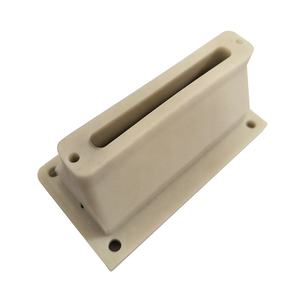
Ain Block High Thermal Conductivity Aluminum Nitride Ceramic Special-Shaped Part
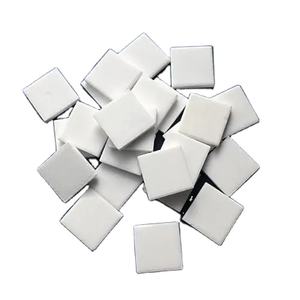
Factory Customized Square Wear-Resistant High Thermal Conductivity Low Dielectric Loss Aluminum Nitride Ceramic Substrate High Temperature Resistant
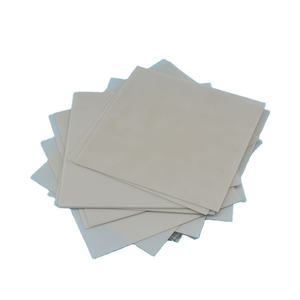
Aluminum Nitride Aln Ceramic Sheet Substrate
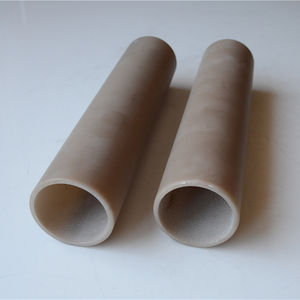
Industry Heat Sink Big Size Aln Substrate Aluminum Nitride Ceramic Plate
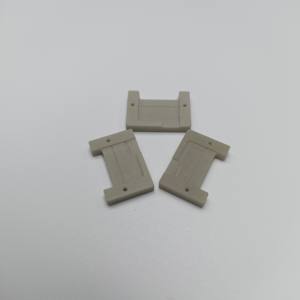
Customized High Quality Corrosion Resistance Thermal Conductivity Ain Aluminum Nitride Ceramics
